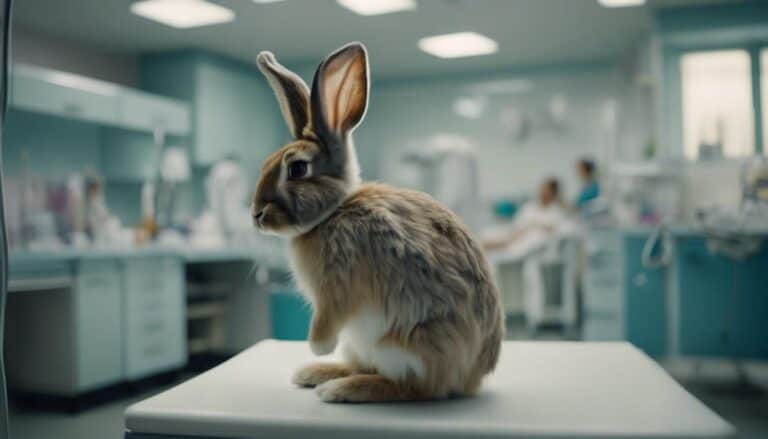Sea bunnies are these cool creatures that live in the ocean. They have this radula thing that they use to scrape and eat toxic sea sponges. Yep, you heard that right, they actually eat toxic stuff! But it's not a problem for them because their bodies are like, 'Bring it on toxins!' They absorb these toxins to protect themselves and get some nutrients at the same time. It's like a double win for the sea bunnies!
Their digestive system is all super specialized to handle these toxic sponges. So, when they munch on them, they're basically saying, 'I can handle this!' By absorbing these toxins, sea bunnies become like little warriors that predators don't want to mess with. Imagine being so tough that even your food makes you a no-go zone for other animals!
If you're wondering how these sea bunnies chow down and stay alive, get ready for some mind-blowing facts about their eating habits and survival skills. It's like a whole adventure learning about how these cute little creatures navigate their ecosystem and thrive in their underwater world.
Contents
- 1 Key Takeaways
- 2 Anatomy of Sea Bunnies' Radula
- 3 The Feeding Behavior of Sea Bunnies
- 4 Predator Avoidance Strategies of Sea Bunnies
- 5 Sensory Stalks in Sea Bunnies
- 6 Sea Bunnies' Sponge Diet
- 7 Toxic Defense Mechanism of Sea Bunnies
- 8 Digestive Process of Sea Bunnies
- 9 Feeding Adaptations of Sea Bunnies
- 10 Feeding Habits of Sea Bunnies in the Wild
- 11 Impact of Diet on Sea Bunnies' Lifespan
- 12 Frequently Asked Questions
- 13 Conclusion
Key Takeaways
Sea bunnies eat by using their radula to scrape and munch on marine plants and detritus. They have a liking for toxic prey like sea sponges, which help them defend themselves and get the necessary nutrients. To deal with these toxic meals, sea bunnies have a fancy digestive system that helps them process the toxins efficiently.
When sea bunnies absorb these toxins, they become quite unappetizing and even dangerous to predators. So, their way of eating not only provides them with sustenance but also serves as a defense mechanism. It's like a double whammy for any predator eyeing them for a snack!
In the grand scheme of things, the way sea bunnies chow down and what they choose to chow on are super important for their survival and how long they can hang around in the big blue sea. So, their diet and feeding habits are like their secret weapons for a long and happy sea bunny life!
Anatomy of Sea Bunnies' Radula

Sea bunnies have this cool feeding tool called a radula. It's like a long, ribbon-like structure with tiny teeth that help them scrape and eat algae, detritus, and other stuff they find in the ocean. Basically, it's their go-to utensil for chowing down on marine plants.
This radula is super important for sea bunnies because it helps them get all the nutrients they need from different types of marine vegetation. It's kind of like a moving conveyor belt with teeth that work together to grab and break down food.
The radula is basically a result of sea bunnies evolving to be awesome herbivores in their environment. It's a finely-tuned tool that helps them get the food they need to survive and grow. By using their radula just right, sea bunnies can make sure they're getting all the essential nutrients they need.
The radula is super efficient at scraping and eating food, showing how sea bunnies have evolved some pretty cool tricks to thrive on their plant-based diet.
The Feeding Behavior of Sea Bunnies
Sea bunnies have a fascinating way of eating—they actually fancy toxic prey like sea sponges. Their digestive system is pretty unique and helps them handle these toxins for protection.
Eating Habits of Sea Bunnies
Sea bunnies have a cool way of finding and chowing down on toxic prey. They use special rhinophores to detect chemical signals in the water, leading them to their favorite snacks like toxic sea sponges.
Once they spot their meal, these little guys use their rhinophores to grab and eat the toxic critters. And get this – their guts are built to handle these toxins, turning them into a defense mechanism against predators.
Food Preferences of Sea Bunnies
Sea bunnies have a cool way of finding their favorite food, like sea sponges, thanks to their special nose-like sensors called rhinophores. These sensors help them sniff out the yummy scents of their toxic prey in the ocean. Sea bunnies, just like other sea slugs, have a unique way of choosing what they eat by going for the toxic stuff that other creatures avoid.
You see, sea sponges and other toxic prey have chemicals that can be harmful to many marine animals. But sea bunnies have figured out a way to not only handle these toxins but also use them for their defense. Their stomachs are super good at dealing with these toxins, so they can eat the toxic prey without any problems. This special way of eating not only keeps sea bunnies well-fed but also helps them stay on top as tough predators in their underwater world.
Digestive Process in Sea Bunnies
Sea bunnies have a cool way of dealing with toxins in their food. When they chow down on toxic prey like sea sponges, their digestive system kicks in to help them out. It's like a defense mechanism upgrade!
So, these sea bunnies absorb the toxins from their food, basically turning them into little toxic superheroes. This makes them unappetizing to predators like other mollusks and crustaceans. It's like they're saying, 'Hey, don't mess with me, I'm toxic!'
Predator Avoidance Strategies of Sea Bunnies
Sea bunnies have some clever ways to avoid getting eaten by predators in the ocean. One big trick they've up their sleeve is being toxic. They get this toxicity from the food they eat, like poisonous sponges. By absorbing these toxins, sea bunnies become a risky meal for any predator. It's like a warning sign saying, 'Don't eat me, I'm bad news!'
But wait, there's more! Sea bunnies can also use jellyfish stingers to defend themselves. Imagine having your own little weapon against attackers! These stingers help keep predators at bay, making sea bunnies a tough target to mess with.
Their size is another advantage. Being small helps them slip away from many predators. It's like trying to catch a tiny fish in a big ocean – not an easy task!
With these cool tricks and defenses, sea bunnies are like the ninjas of the sea, making sure they stay safe and sound by scaring off any threat that comes their way.
Sensory Stalks in Sea Bunnies
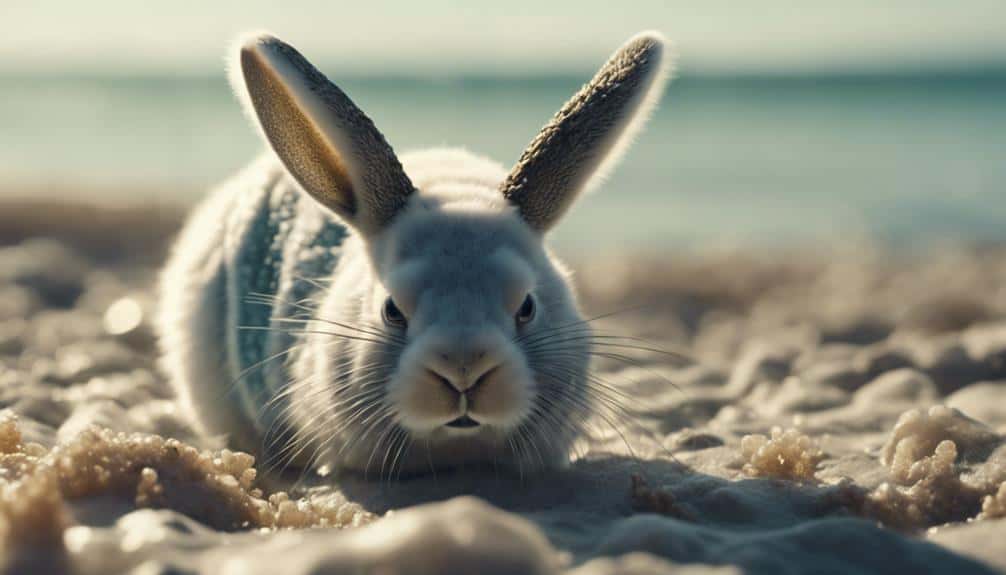
Sea bunnies use their sensory stalks, like the rhinophores, to pick up on smells in the water. These special structures help them find food and possible partners by sensing scents from far away.
The fuzzy feel of the rhinophores gives sea bunnies a bigger area to detect chemicals, which is super important for their survival in the ocean.
Sensory Stalk Function
Have you ever wondered how those cute sea bunnies use their sensory stalks, or rhinophores, to thrive in their coastal marine homes? Well, these special sensory organs play a crucial role in the daily lives of sea bunnies:
They help sea bunnies detect different scents in the water. This is super important for finding food, like those tricky toxic sea sponges that they love to munch on.
The sensory stalks also help sea bunnies locate potential mates by picking up on pheromones in the water. It's like their own little dating radar!
By having these sensory stalks, sea bunnies have a bigger area to pick up scents from far away. It's like having a super nose that can sniff out goodies or friends from a distance.
Sensory Stalk Anatomy
Sea bunnies have special sensory stalks called rhinophores that help them smell things in the water. These rhinophores are important for sea bunnies to find food and potential mates in the ocean. They can retract these stalks to help them sense their surroundings better.
The fuzzy texture of sea bunny rhinophores is really helpful because it gives them a larger surface area to pick up scents from far away. This feature is super important for sea bunnies to eat and survive, allowing them to move around and follow scents efficiently.
Sea Bunnies' Sponge Diet
Sea bunnies have a unique diet – they mainly munch on toxic sea sponges in their natural homes. It's pretty interesting how they go about their meals and why it's crucial for their survival. Let's dive into how sea bunnies and sea sponges interact:
So, these sea bunnies actively look for and chow down on toxic sea sponges. These sponges are usually a no-go for other creatures because they're poisonous.
What's cool is that sea bunnies have a special tummy setup. It helps them break down and soak up the toxins from the sea sponges they eat, making them quite the toxic treat themselves.
By absorbing toxins from their diet, sea bunnies become a dangerous meal for predators. It's like their way of saying, 'Don't mess with me!'
Eating sea sponges isn't just about getting food for sea bunnies. It's also a smart move for defense and staying alive in their underwater world.
The relationship between sea bunnies and sea sponges is pretty fascinating. It shows us how creatures in the ocean have their own special ways of surviving and thriving.
Toxic Defense Mechanism of Sea Bunnies
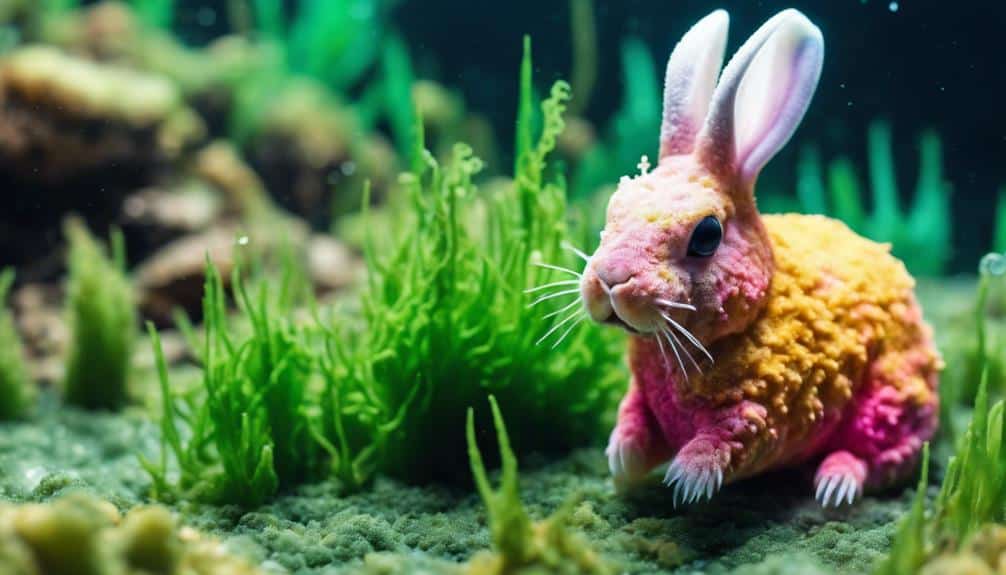
Sea bunnies have a cool way of protecting themselves from bad guys. They eat poisonous stuff like sea sponges, and then they take those poisons and use them as their own defense system. It's like they're saying, 'You mess with me, you're gonna regret it!'
So basically, these sea bunnies are like walking chemical weapons. If a predator tries to snack on them, they'll get a mouthful of toxic surprise. It's nature's way of telling everyone to back off and leave these little guys alone.
It's pretty smart how sea bunnies have figured out this whole toxic defense thing. They've found a way to turn something dangerous into their own superpower. So next time you see a sea bunny, just remember they're not just cute little creatures – they're also certified badasses in the ocean.
Toxicity in Sea Bunnies
Sea bunnies get their toxic nature from the toxic prey they eat, like sea sponges. Their digestive system is specially designed to soak up and use these toxins for protection. This toxicity is like a big 'Stay Away' sign for predators, keeping them from messing with these cute critters.
Defensive Chemicals Secretion
Sea bunnies are pretty cool critters in the ocean. They've a clever way to protect themselves from predators by using toxins they get from the things they eat, like sea sponges. These toxins are like their secret weapon that helps them stay safe in the big, wide ocean.
When sea bunnies feel threatened, they release these toxins to make themselves taste bad and even a little dangerous to predators. It's like their way of saying, 'Hey, I'm not a tasty snack, so back off!' This defense strategy not only keeps them safe in the moment but also teaches predators to steer clear of sea bunnies in the future.
Predation Avoidance Strategy
Sea bunnies have a cool way to stay safe from predators in their coastal homes. They get their defense skills from the toxins in the sponges they eat. These toxins make them taste really bad to predators, so they usually leave sea bunnies alone. And if a predator does try to mess with them, sea bunnies can break off parts of their mantle as a sneaky move to escape.
These small sea slugs, which are only about an inch long on average, rely on these tricks to survive in the ocean. Their toxic diet and ability to ditch parts of their mantle help them stay safe and sound in the big blue sea.
Digestive Process of Sea Bunnies
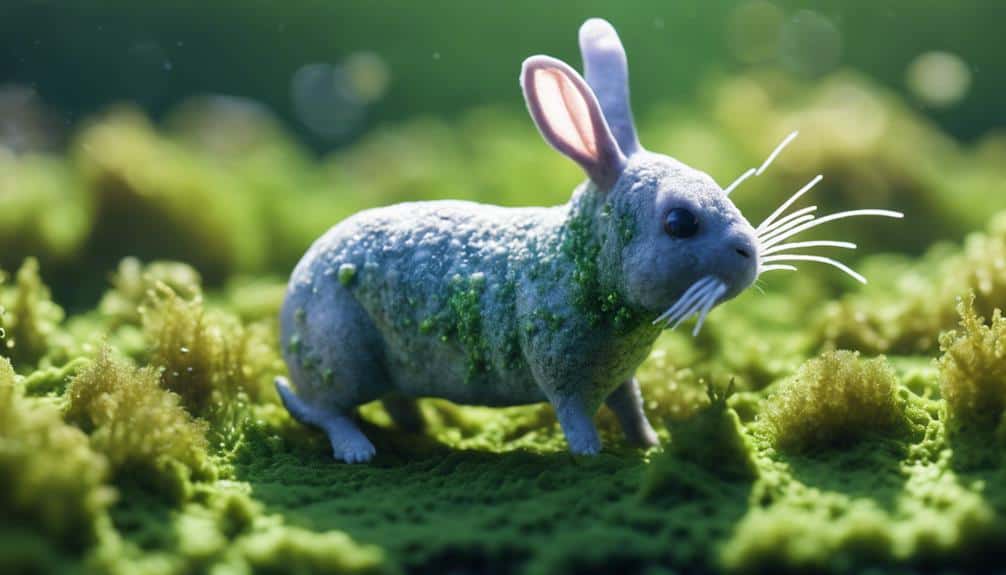
Sea bunnies have a cool way of dealing with toxins from their food to protect themselves from predators. When they eat toxic stuff like sea sponges, their digestive system kicks into gear to handle those toxins. It's like their own built-in defense system!
Their digestive system is designed to efficiently break down the toxins in their food. By absorbing and incorporating these toxins, sea bunnies become pretty poisonous themselves. This makes them unappetizing to any predators thinking of making a meal out of them.
The reason sea bunnies are toxic is because of the toxins in the sponges they munch on. Their digestive system is like a superhero, turning those toxins into a shield against predators. It's a clever survival strategy that shows how they've adapted to their toxic diet.
In a nutshell, sea bunnies are like little toxic superheroes, thanks to their digestive system handling those toxins like a boss!
Feeding Adaptations of Sea Bunnies
Feeding adaptations in sea bunnies are all about how they deal with toxic prey efficiently. These little creatures have some cool tricks up their sleeves to handle toxins in their food, which helps them thrive in environments where other animals might struggle. Let's take a look at some of the key feeding adaptations of sea bunnies:
Sea bunnies have a specialized digestive system that's perfect for breaking down and neutralizing toxins found in their prey, like sea sponges. This system is crucial for their survival.
Their rhinophores, which are sensory organs, help sea bunnies sniff out food scents in the water. These come in handy when they're on the lookout for potential prey.
Sea bunnies can absorb toxins from their food and use them for self-defense. This makes them taste pretty bad to predators, which is a handy defense mechanism.
Feeding Habits of Sea Bunnies in the Wild
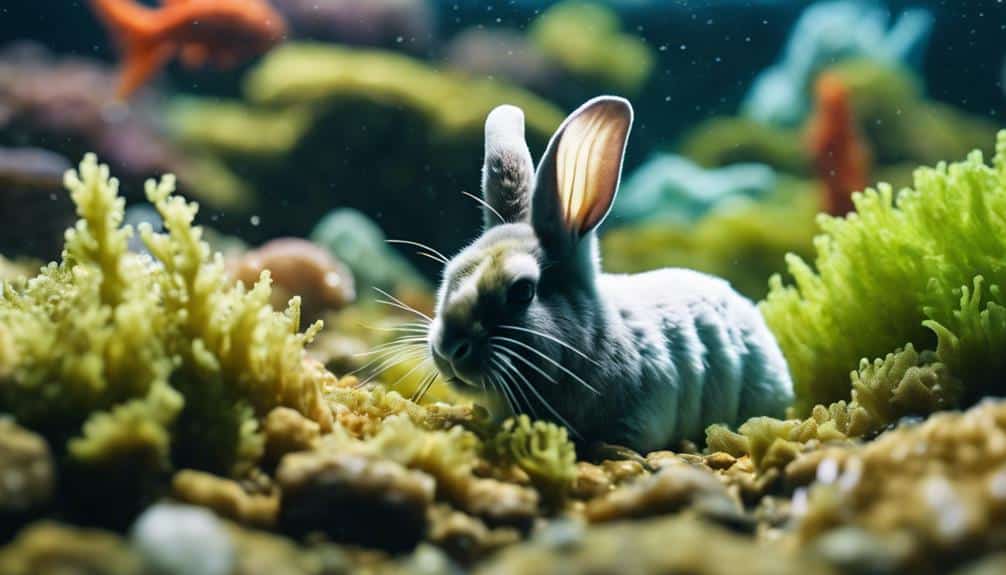
Sea bunnies are pretty cool creatures when it comes to finding food in their natural habitat. These cute sea slugs have a unique diet – they mainly chow down on toxic stuff like sea sponges. But here's the twist: they don't eat these toxins for nutrition; they actually use them as a defense mechanism. These toxins get absorbed into their bodies, making them toxic to any predators eyeing them for a snack. It's like having a built-in shield in their marine home.
With their fancy sensory organs called rhinophores, sea bunnies can sniff out food smells underwater. This helps them zero in on their favorite toxic prey. Because of their diet and the toxins they gather from it, sea bunnies are a big threat to other sea creatures like mollusks and crustaceans that live around them. Their eating habits not only keep them fed but also have a big impact on how their underwater world works. It's like a real-life drama of who's eating who in the sea!
Impact of Diet on Sea Bunnies' Lifespan
Sea bunnies live longer when they eat toxic prey like sea sponges. These creatures absorb toxins from their food, which makes them more toxic and better at defending themselves. Their special digestive system helps them take in toxins from their prey, which helps them survive. Eating toxic prey also scares off predators, helping sea bunnies thrive in their environment.
In simple terms, sea bunnies stay healthier and live longer when they eat toxic prey. Their diet plays a crucial role in their ability to stay safe and thrive in their surroundings.
Frequently Asked Questions
Can You Hold Sea Bunnies?
It's best to avoid holding sea bunnies because they're toxic. Interfering with them can be harmful to both you and the creature. So, it's safest to just observe sea bunnies in their natural habitat to ensure everyone stays safe.
Do Sea Bunnies Have Ears?
Sea bunnies don't have ears like we do. But they have rhinophores that help them smell things in the water. These little sensory organs are like their nose, helping them navigate and survive in the ocean. It's pretty cool how they've adapted to their marine habitats, isn't it?
Why Can't Sea Bunnies Be Pets?
Sea bunnies can't be pets because they are highly toxic. Marine authorities say no to keeping them to avoid any risks. These little creatures have toxic defenses that they get from eating toxic prey, which makes them not good for handling. So, if you want to take care of a sea bunny, just watch them in their natural habitat.
Why Do Sea Bunnies Eat Sea Sponges?
Sea bunnies chow down on sea sponges because they want to stay safe. These cute critters have a special way of dealing with toxins found in sponges. They have a unique digestive system that can handle these toxins and use them to their advantage. By absorbing these toxins, sea bunnies become less tasty to predators. It's like they're turning the tables on their enemies by making themselves toxic too.
Conclusion
So, you know how sea bunnies chow down on food, right? These cute little creatures have a cool way of eating. They've this special thing called a radula in their mouths that helps them munch on sponges. Plus, they're pretty smart about avoiding predators while they're at it.
Using their sensory stalks, sea bunnies can easily find their favorite snacks in the ocean. It's like they've their own built-in GPS for food! These feeding habits are super important for their survival and how long they live in the wild.
Understanding how sea bunnies eat gives us a glimpse into how everything in nature is connected. It reminds us of the vital role they play in the ocean ecosystem. So, let's make sure we take care of their ocean homes for the generations to come!


